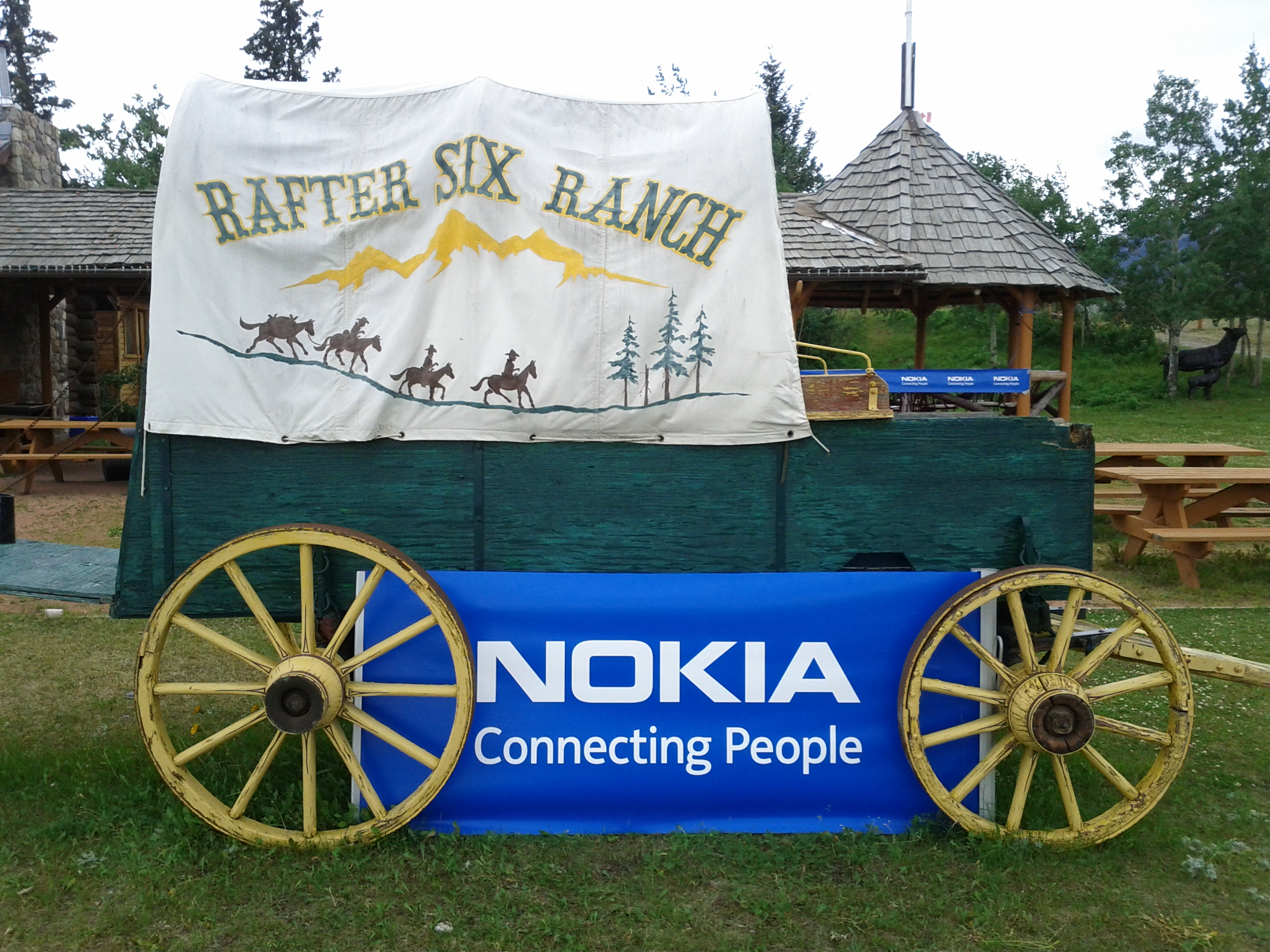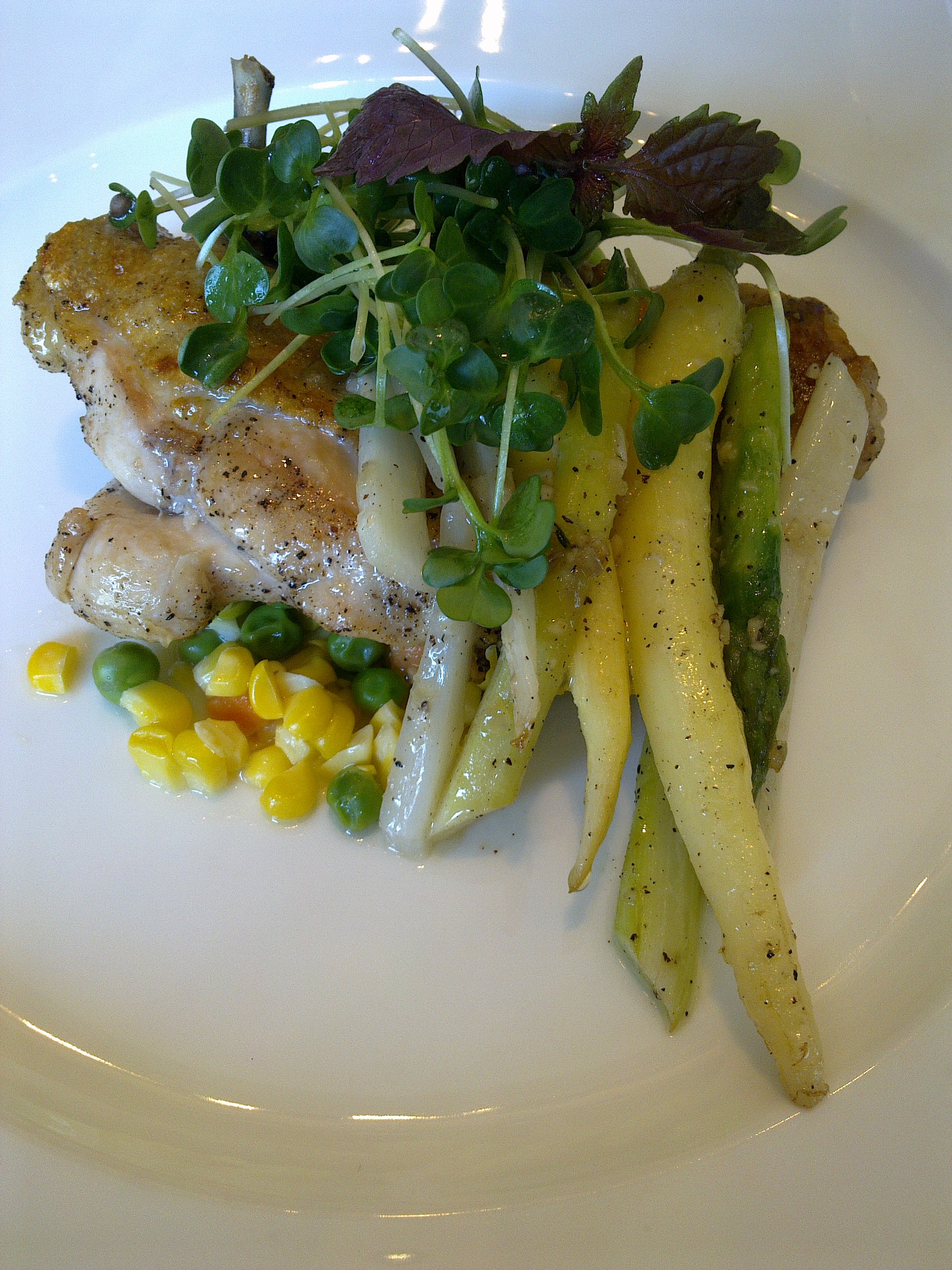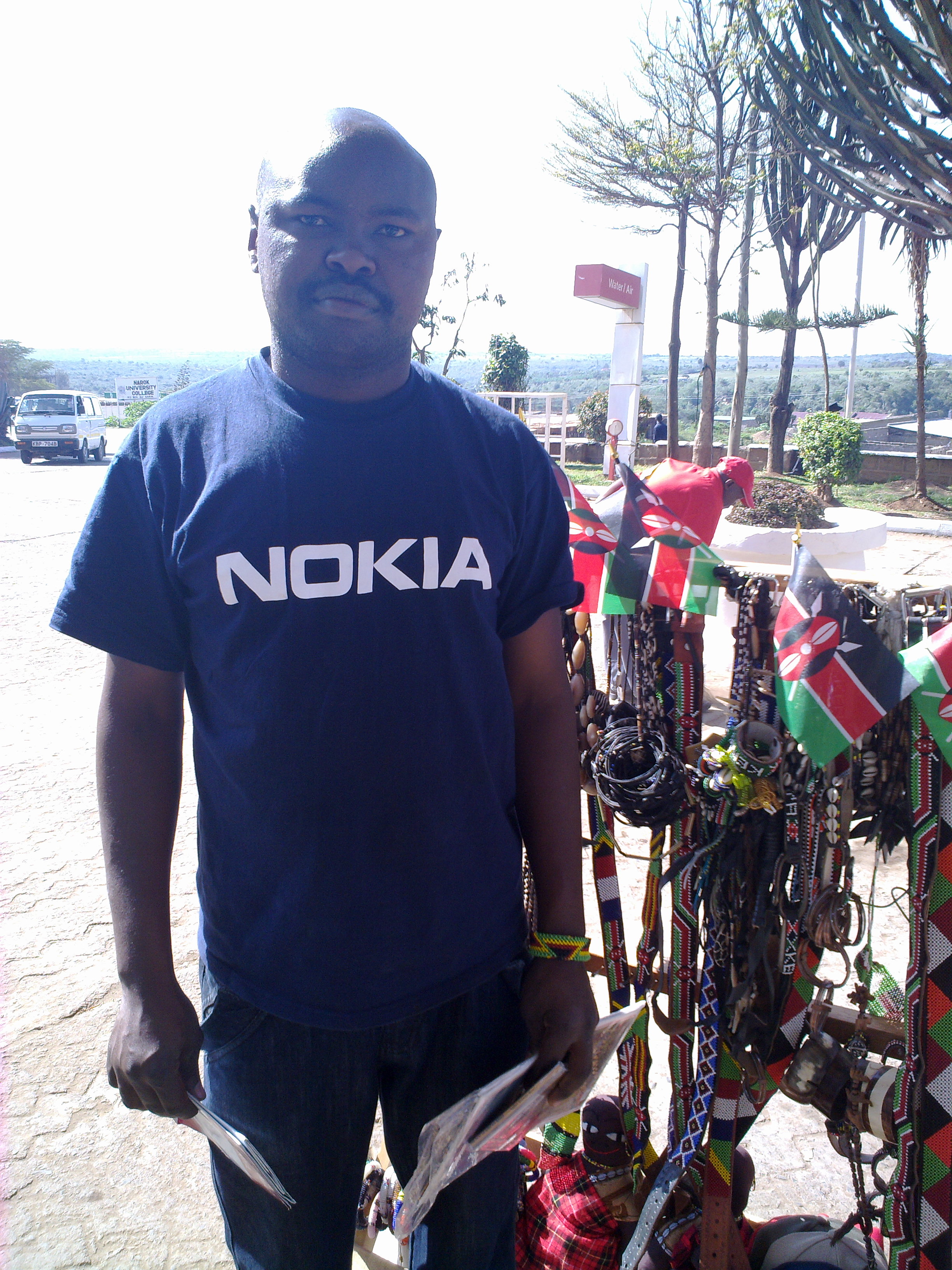If I was second-guessing my switch to Android I had no such regrets about my new carrier, Mobilicity. Yes, there was the small issue of having no signal at home, but the cheap and unlimited service that worked great everywhere else more than made up for that. And their selection of handsets couldn’t be beat — they were the only carrier in English-speaking Canada to sell the Nexus One, and the only one in North America to offer the MotoSpice. Then they trumped both, releasing a device that was both new and familiar at the same time, right when I needed it most. At a hundred and fifty bucks the Nokia E73 was a no-brainer for me.
It was all very comforting, at first. I still had the installer files for my favourite Symbian apps, plus licenses for the paid ones. I spent an evening getting everything on the phone organized into folders and shortcuts, as I had done with Nokias of days gone by. I even gained a modicum of respect for the infamous Nokia Messaging. It seemed to work a bit better on my E73 than on my N86 — the secret was to respect the low memory on the handset by loading only the last few emails from each of my two accounts of the day. Not optimal by any means, but functional at least.
I took my E73 with me to a WOM World event held on a ranch in Western Canada that summer. The journey there and back reminded me of just how dated Nokia’s PDA phone OS was. With Symbian the handset was offline by default; specific steps were required by the user to take it online. Android devices were very different; they assumed a persistent connection to not just the network, but to the Internet as well. With unlimited data available in major Canadian cities, guess which one was more useful?
It had become all too clear that there would be no future for Nokia and I. Their new CEO — Stephen Elop, a Canadian of all things (!) — had announced earlier in the year that future high-end devices would run Windows. I had stopped using Windows long ago; for me it was Linux or nothing. Nokia did have Maemo, a Linux-based tablet OS that eventually made its way onto phones. I had trialled the Maemo-powered N900 the previous spring and quite liked it. But its successor, the MeeGo-powered N9, was never widely available and pretty much doomed from the get-go.
I brought both my E73 and N86 along with me on a Kenyan safari that autumn, where granular control over network charges and a local SIM card served me well. When I got home I retired both and moved on to Android full time.
]]>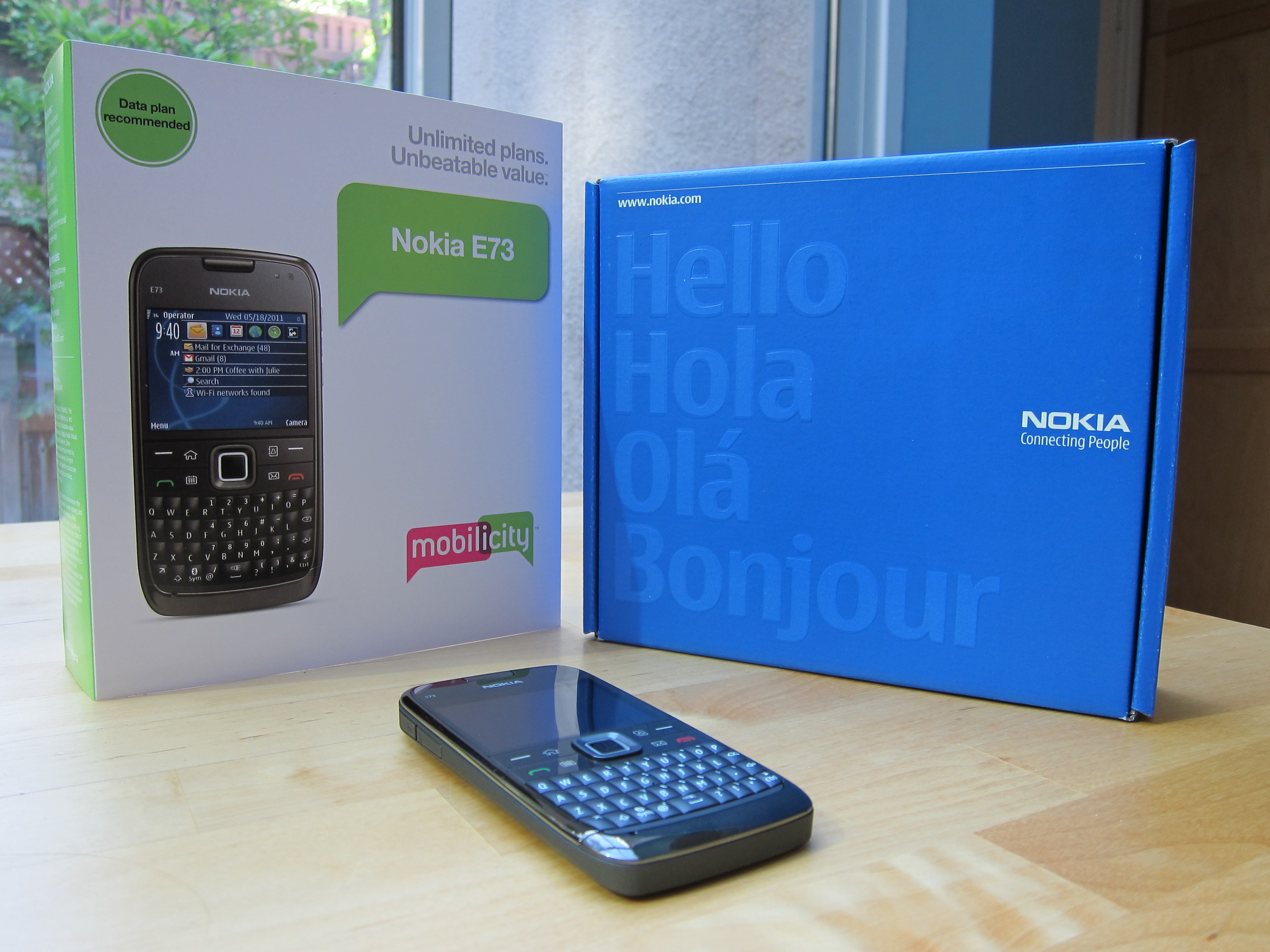
I paid about five hundred bucks for my E71 back in 2008, so imagine my surprise three years later when Mobilicity brought the AWS-tuned E73 to Canada for a measly hundred and fifty. I ran out and bought one almost immediately.
That summer my E73 came along with me to Canmore, Alberta for yet another WOM World event — #NokiaUnfenced. It was to be my last one apparently, as I honestly (perhaps foolishly) professed on camera that I had zero interest in Windows-powered Nokia devices.
I also made an ass of myself on an obstacle course, but that’s another story…
A Summerlicious treat…
Though S60 was a significant downgrade from Android, my modern-ish E73 had many of Symbian’s best qualities from days gone by. The autofocus camera with macro was missing on many newer Nokias of the day, replaced by cheaper and quite inferior EDoF technology. You can read more about that in part one of my Symbian Anna Extravaganza.
And as you can probably guess, Android would win me back in short order. But it would take the brave new world of custom ROMs to do it.
]]>My biggest beef was text entry — email and SMS, it seemed, still had their place in this brave new world of mobile computing. The best input solution I could find for my Nexus was an app called Swype, developed by the same brilliant mind behind T9 for number pad phones. And Swype was every bit as clever; the user entered words by flicking their thumb across an on-screen virtual qwerty keypad. The longer the word the more accurate Swype was. More common words were a different story, though; “is” and “if” were often confused, along with “on” and “of”, and just about everything else with less than five letters in it.
It was a frustrating compromise for someone used to physical qwerty — at this point I was even missing the number pad on my N86! So when my new carrier, Mobilicity, released the cheap and cheerful Motorola Spice I got one almost immediately. In fact, at one point I had two.
Here, for less than $200 CAD, was a handset that seemed to have it all: Android, a physical qwerty keypad, even the same vertical sliding design as my N86. An unexpected bonus was the trackpad on the back of the phone — very handy for scrolling through web pages without your thumb getting in the way. The only problem, aside from the dreary lo-res fixed-focus camera, was that the MotoSpice was slow. It was to be expected, I guess, that a smartphone selling for less than half the price of the Nexus One would have a processor just over half as fast.
In practice it wasn’t so bad. I discovered that Android scaled quite well to low-powered devices. One key thing was to be patient while processes (apps) were launched. With less available speed and memory the Spice had to figure out how to allocate its meagre resources when something new was added to the mix. That was the slow part, at least for me; once an app was up and running I found the speed to be quite acceptable.
Also key was liberating the Spice from Motorola’s bloatware, and this could only be accomplished through rooting. The Spice was actually the first Android device I ever rooted — sorry to have misled you but yes, I rooted my MotoSpice long before going near the bootloader on my Nexus One. But where the Nexus got a proper unlock, root and custom recovery the hard way my Spice was rooted using a simple tool that did the hard work for me. Once root was obtained it was a simple matter of removing the Android package “Spicy.apk” and I was good to go. I also installed an app that enabled WiFi tethering; that was another feature that the MotoSpice was missing out of the box.
In retrospect I think the Spice was ultimately a transition device between my tactile N86 and my (almost) all-touch Nexus One, even though I got the Nexus first. I used the MotoSpice as my primary phone for a good six months — from December, 2010 to May, 2011. It came with me on a WOM World-sponsored visit to the famous South By Southwest conference and did quite well there; the Spice was never sold in the USA so the other bloggers on that trip had never seen one. It didn’t fare so well on its second conference run, though. At Podcasters Across Borders in May it became quite apparent that my Spice couldn’t keep pace with the iPhones that surrounded it — plus I dropped it in the elevator of my hotel, leaving a noticeable ding that was pretty much a kiss of death.
But the memory of my MotoSpice lives on. I gave mine away to a friend in need, but was fortunate enough to score a dummy model from my local unlocker. Had the Spice as much processing power as higher-end phones I’d probably still be using it today.
]]>That November I boarded an overnight flight to London, the first leg of yet another once-in-a-lifetime trip that would take me onwards to Bangkok, Singapore, Taipei and Tokyo.
I was met the next morning in Piccadilly Circus by Tom Hall of WOM World, who graciously gave up his Sunday to give me a personal tour of London and loan me a Nokia for the destinations that lay ahead. Over brunch an N900 and N97 mini appeared on the table, plus a handset that was earmarked for me: the N86. Truth be told I was initially more drawn to the N900, being a desktop Linux user and all. But the N86 quickly proved to be the better choice — in fact, its camera was so good that my standalone point-and-shoot didn’t leave my suitcase for the next two weeks.
In Bangkok I took spectacular photos of the gold and purple Grand Palace and documented my first-ever tuk-tuk ride on video. I was also lucky enough to catch Al Pavangkanan, whom I’d met that summer on the N97 24/7 tour. Thanks to him I got to see Bangkok’s two famous IT malls, Pantip Plaza and MBK Center.
In Singapore I documented my first-ever durian fruit and a sunset view of the city skyline aboard the Singapore Flyer. I also got stood up by someone I was supposed to meet there. But I’m over it, really. More importantly, I snagged a local SIM card with unlimited data — a good thing, because by my fourth day abroad I had already burned through a two-week data roaming package from my carrier back home.
In Taipei I scored another local SIM, and kind of went insane with Qik, the live streaming video app that I first used on my E71. I kept it running over an entire breakfast in my hotel’s restaurant (much to the horror of the other guests there, I’m sure) and streamed an end-to-end walk-through of a night market. I’m pretty sure this is what would eventually win me that white N97 from the company.
In Tokyo there was sadly no option for local unlimited data. I spent about half an hour in a DoCoMo service centre before giving up and walking out, having come to the conclusion that the staff there were too afraid to talk to me. I also had a moment with one of the N86’s few shortcomings, Nokia Messaging. Nokia used to have a regular email client that worked great. Nokia Messaging was their “improved” next-generation email experience, designed to mimic the push email you could get on a BlackBerry. But this was no BlackBerry — quite possibly due to the low amount of RAM, Nokia Messaging on the N86 was crap. Deep within the bowels of Shibuya station I spent what seemed like an eternity struggling to find an email with directions to a dinner engagement; then I remembered that I could find that same message using a free email-over-WAP service.
Despite that little hiccup I ordered an N86 to call my own almost as soon as I got back to Toronto. The next spring it would accompany me on a visit to Moscow and a high school friend-turned-diplomat. That summer I got invited on another WOM World tour, this one promoting the N97mini to Canada. In a tricked-out recreational vehicle from Montreal to Toronto I got to hang with a Mr. James Whatley, whose 2009 bungee-jump over Victoria Falls with an N86 strapped to his wrist had first piqued my interest in this device.
The swan song for my N86 was a Kenyan safari in September of 2011. I had been to Mother Africa twice before and knew how popular Nokia phones were there. But I was caught completely off-guard by the presence of Android devices, at least in Nairobi. Every local carrier had not just one but an entire selection, from the cheap and cheerful to the high-powered and high-end. Kind of ironic considering I had left my Android phone at home and brought the N86 just for this trip.
That’s right, this unabashed Nokia fanboy was now a full-time Android user.
]]>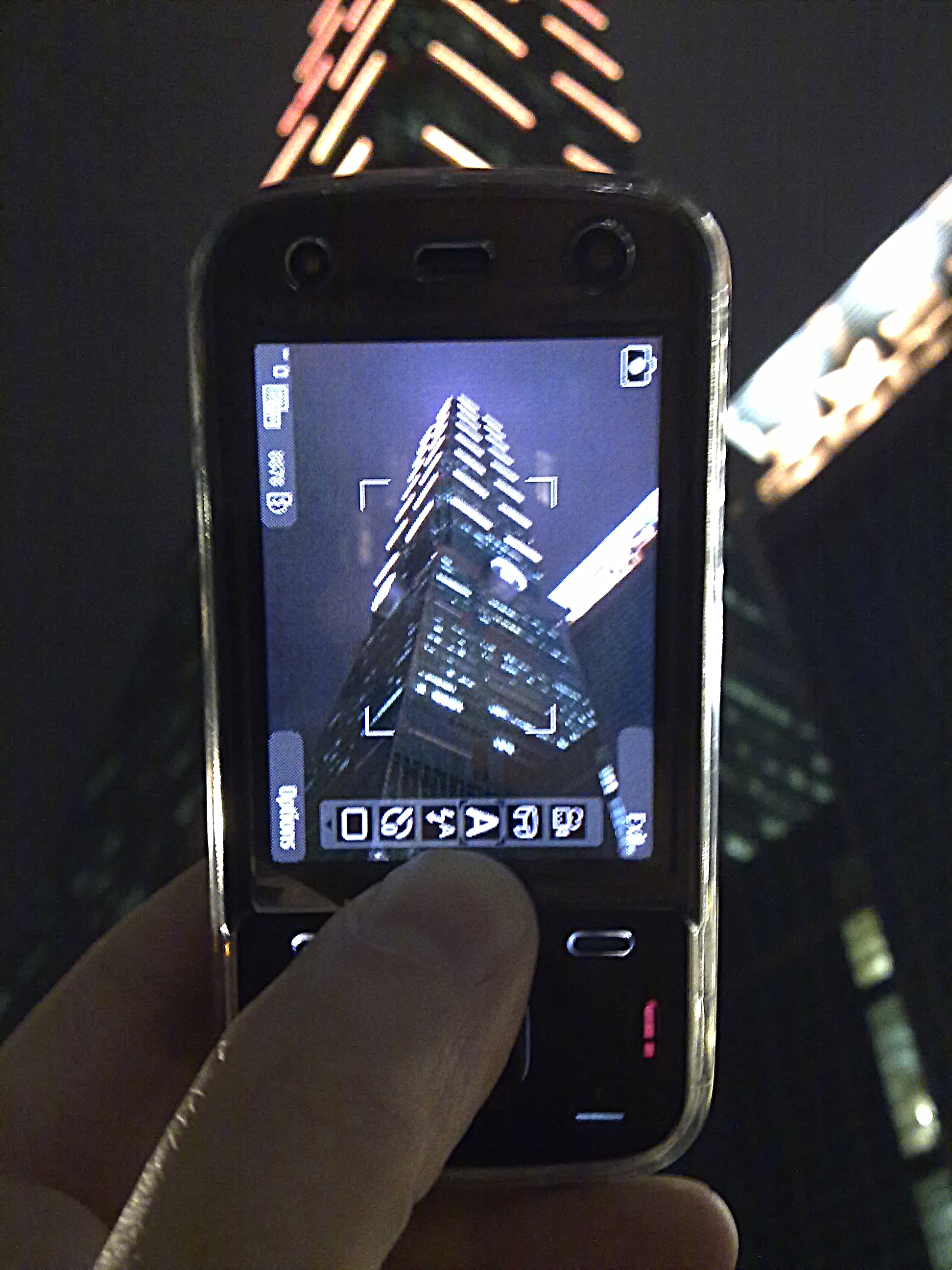
Here’s the Nokia N86 outside of Taipei 101 in November, 2009. WOM World graciously loaned me this legendary Nseries device for a points-burning run around the world. Okay, mostly Asia.
My interest in this particular Nokia can be traced a bit further back to this photo, in which a Mr. James Whatley bungee-jumps over Victoria Falls with an N86 strapped to his wrist. Now that’s a rockstar blogger…
A hallmark of the N86 was its full-frame video sensor; though output was limited to 640×480 pixel VGA resolution, you could use the entire 8 megapixel sensor for zooming, as per the example above.
In addition to that pan-Asian jaunt my N86 also travelled with me to Moscow in the spring of 2010, and took some fantastic photos there.
And in September of 2011 my N86 accompanied me on a trip to Kenya. Nokias were, as you’d expect of the developing world, very popular in Mother Africa. But I was entirely caught off-guard by the pervasiveness of Android in shops and in ads on local TV.
Ah, but I’m getting ahead of myself…
]]>Hi Andrew,
Would you like to join Nokia for a two week trip across the US next month demonstrating some of the capabilities of the Nokia N97?
And thus, in the summer of 2009 this humble blogger of some eight years got his fifteen minutes of fame. I don’t think I was WOM World’s first choice for this gig, but that didn’t matter; I wasn’t the first choice to tour Asia with The Second City either way back when, but I still got to go. How could I pass up an opportunity to visit four cities on someone else’s dime, with a worldwide audience watching our every move?
Two amazing weeks that July were spent in the lovely company of three fellow bloggers — Matthew Bennett, Jon Bruha and George Kelly. Dan Silvers was our chaperone in Los Angeles and San Francisco, then rejoined us in New York City after we had a few days in Chicago on our own. Fond memories of “N97 24/7” are many; a few of my favourites:
- The unabashed geeky joy of some high-level phone talk on the hundred dollar-plus cab ride from LAX to our boutique Hollywood hotel.
- Our meet-up in San Francisco, where I met Dennis Bournique of WAP Review, Myriam Joire from Engadget and Ewan Macleod, a mobile entrepreneur from the UK.
- A failed “challenge” in Chicago, which turned into a rather awesome bender in a bar at the base of the Willis Tower.
- A decidedly over the top wrap-up party in Manhattan, full of “beautiful people” who mostly had no idea who we were, or even what the event was about.
Oh yes, the phone… I viewed the N97 as an iPhone with a secret weapon — the pop-out qwerty keypad underneath. An over-simplification perhaps, but that seemed to me to be the best way to pitch the device to non-Nokians. Unfortunately, it was a pretty hard sell. Where the iPhone was elegant the N97 was clunky, if ultimately more powerful. I had never before tested a mobile device to its limits like I did during those two weeks, and all too often the N97 came up short. Battery power was a constant issue, despite each of us having two devices. The built-in GPS radio took forever to lock on to a signal. Worst of all, we simply spent too much time hunting through menus to get to what we were looking for.
I think its a testament to the character of our blogging quartet that we took the perceived failure of this tour so personally. We had three scheduled meet-ups, one in every city but New York. The turnout was pretty good for the first, fantastic for the second and something on the order of two people for the third. I’ll never forget looking at an entire wall of catered food and then across an almost-empty room at the University of Chicago. In retrospect we probably could have had a lot more fun with the challenges that WOM World handed down to us. But at the time we took our role as Nokia ambassadors very seriously, perhaps too much so.
I didn’t get to keep a souvenir N97 from the tour, but I did end up winning one in a contest the following Christmas. I used it as a test subject for some theme hacks, but never as my full-time phone.
]]>
Here it is, the infamous N97. It wasn’t Nokia’s first touchscreen device, but it was the first to show an obvious iPhone influence — namely the chrome bezel around the perimeter of the device.
The hidden qwerty keypad was an obvious advantage over Apple. As for the touch factor, the N97 was finger-friendly on the home screen widgets but less so elsewhere — explaining the “one foot in the past” stylus that was included in the box.
Nevermind that the N97 was kind of a dud; it provided me with a once in a lifetime opportunity to take one with me across the USA in July of 2009. The video above is an 11-minute compilation of that two-week tour; I just dropped in some appropriate music.
Note that if the video quality looks like crap it’s because the source material is QVGA — not sure why Vimeo won’t let me embed it at its native resolution…
In December of that year I would finally get an N97 to call my own, courtesy of a contest run by Qik. Unfortunately by this time I was using a non-touch Nseries as my daily driver.
I did manage my first-ever S60 phone hack, though — faithfully following the instructions of other, more clever N97 users.
]]>By October of 2008 I had trialled a variety of smartphones from Nokia’s WOM World. The N82, N95 (8 GB version) and E90 had all come and gone. All of them were fine devices, but not a one threatened an early retirement for my E61i. The E71 was a different story, being the official update from Nokia and all. It was smaller, yet had the same screen resolution and a better qwerty keypad. The camera had autofocus and a flash, and best of all there was a version with 3G data service tuned for the Americas. The lanyard loop sealed the deal.
3G data became a lot more useful when Fido, my carrier, started selling Apple’s iPhone 3G — and offered a 6 GB/month data package for $30 CAD. It was still a rip-off, to be sure, but at least it was better than the 3 megabytes I was getting for $25 just two years prior. It was around this time that I started using an app called Qik to stream video from my E71. The results weren’t stellar, but it bears repeating: in 2008 I was streaming live video to the Internet from my mobile phone.
Another S60 innovation was an app called JoikuSpot, which enabled my E71 to broadcast access to my cellular data via WiFi . Such things are taken for granted today, but in 2008 the idea of tethering your phone to a laptop instead of using an expensive hotel Internet connection was the stuff of magic. Only problem was that JoikuSpot, even the paid premium version, was a bit finicky about providing a stable connection. But the idea was bang-on, even if the execution was sometimes lacking.
My E71’s star turn was a week in Hong Kong to ring in 2009. I booked that trip in August of 2008; students of economic history will recall how the global economy kind of went to shit the following month. Despite the doom and gloom I resolved to enjoy myself, and my biggest indulgence by far for that trip was the data roaming fees. I made a pilgrimage to the local Nokia Flagship Store, where I tried the new flagship N96 for the very first time. I would end up trialling that device from WOM World the following month, but it wouldn’t woo me away from my E71.
Truth be told, my most vivid memory of this vacation had nothing to do with the phone. Someone at my hotel had pegged me as some kind of patsy, and sent no less than five, shall we say, “working girls” to my room over the course of an afternoon. Serves me right for blogging instead of taking in the sights, I guess.
My E71 came along on another, more fateful trip in the summer of 2009, one that would put it out of the spotlight and pretty much change my life forever…
]]>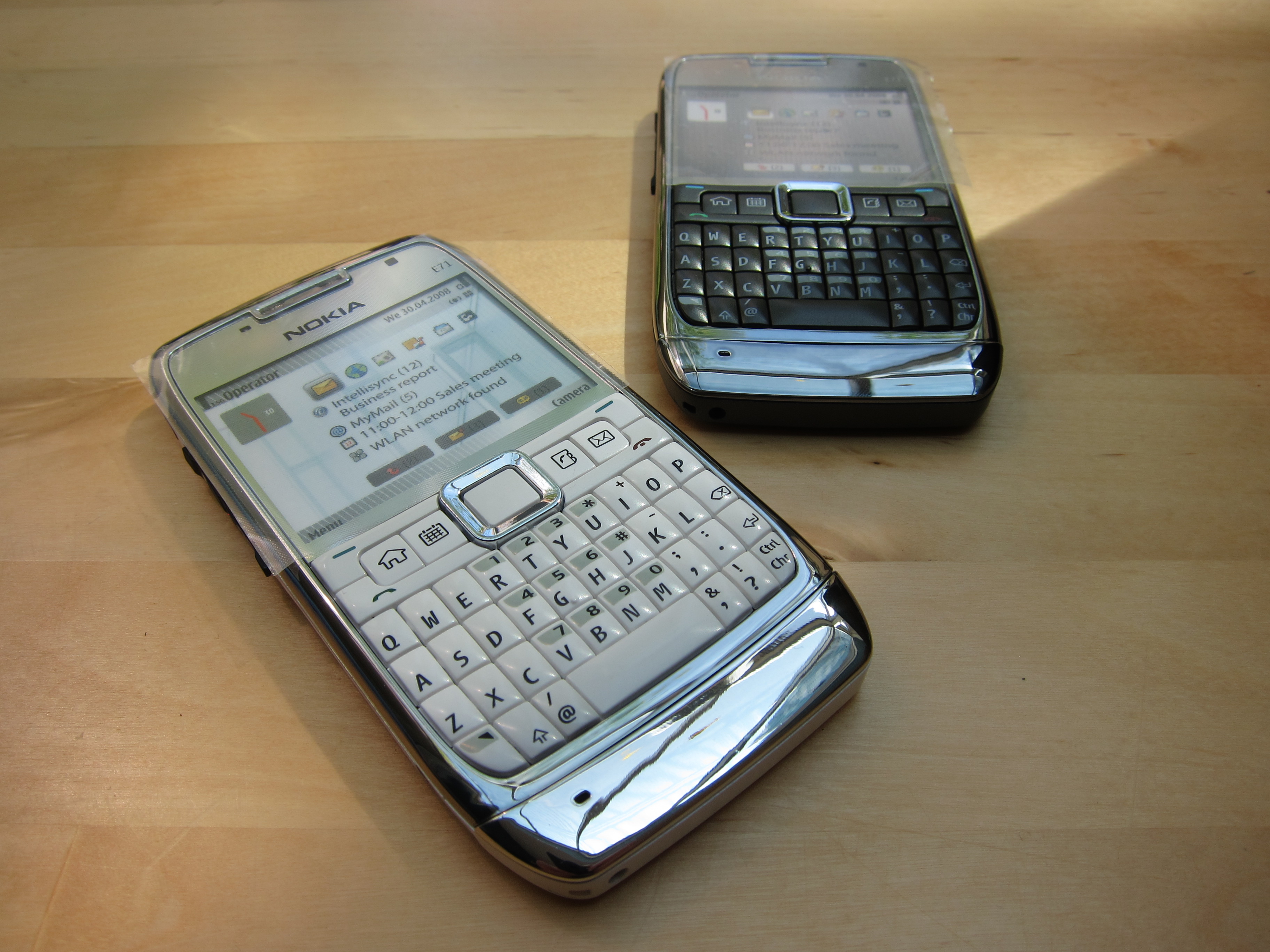
By early 2008 my penchant for collecting dummy phones — like the pair of Nokia E71s you see above — had reached its “irrational exuberance” phase. A photo of my white E71 can be seen here.
The E71 was a logical upgrade from my E61i. That I got to trial it before buying one was an added bonus. Thanks, WOM World!
Here’s my E71 outside the Nokia Flagship Store in Hong Kong, circa January, 2009. More photos from that trip are available on Flickr.
I took a lot of photos with my E71, but this one is far and away my favourite. Nobody believed me when I told them it was taken with a camera phone. My first impressions of the E71’s camera are also available on my old blog.
Video output was limited to QVGA at a paltry 15 frames per second, but thanks to an iPhone data plan from Rogers and an app called Qik I was able to stream live video to the Internet (!) The clip above is my very first, from December of 2008.
]]>No doubt about it, the iPhone was a revolutionary, game-changing device. Yet to this day I’ve never really been interested in owning one.
There were obvious, practical reasons. I could have imported a first-generation iPhone from the US (at a hefty surcharge), but as I remember it most of the “apps” in those early days weren’t much more than skins for iPhone-optimized web sites. By the time my carrier got the second-gen iPhone 3G I had already begun the move to Linux on my desktop computers. No iTunes meant no iPhone, simple as that.
There were political reasons as well. My short-lived affair with the HTC TyTN and a Windows laptop was no accident; after years of telling users how PowerPC was the superior chip for Macintosh computers, Apple suddenly and inexplicably switched to Intel. I was not impressed. I was similarly disappointed that Apple chose to sell the iPhone through carriers, with locks and subsidies, rather than unlocked in their own retail stores. Blogger Stefan Constantinescu wrote an excellent post in 2008 detailing how Apple had a chance to revolutionize the economics of mobile, and failed. Long story short: I felt burned by Apple and liberated by my unlocked Nokia, a device that I could use on any carrier, anywhere in the world.
Nokia trumped Apple in another, deviously clever way. In the spring of 2008 I received the first in a long series of trial devices from a blogger outreach program called WOM World. I think it started off as Nokia Blogger Relations, and its since been given the new moniker Nokia Connects. Whatever the name, the idea was genius. Anyone with some sort of online presence could request any Nokia product for a two-week trial. A review (good or bad) would send traffic to the writer’s blog and provide free marketing for Nokia. With a steady stream of shiny new toys arriving at my door the idea of being locked to an iPhone for a three-year contract seemed downright comical.
Oh yes, I forgot to mention… The standard carrier contract term in Canada is three years. We’re backwards that way.
Back to the iPhone, I’ve futzed around with almost every version of it, and after only a few minutes its always been the same story — I put it down and walk away. It just doesn’t do anything for me. I absolutely get that it’s made smartphones easier to use, especially for people who have never had one, but for someone like me who struggled through the early years of data synchronization, Internet connectivity and just about every other technological hurdle Apple’s “JesusPhone” has always seemed like a bit of a cheat.
Nokia fanboy? Mobile phone snob? Guilty as charged. I’d finally join the world of modern smartphones a few years later — but for the moment, enduring Symbian’s old school charm was about to pay off. Big time.
]]>